
Calligraphy is a visual art related to writing. It is the design and execution of lettering with a pen, ink brush, or other writing instrument. Contemporary calligraphic practice can be defined as "the art of giving form to signs in an expressive, harmonious, and skillful manner".

Penmanship is the technique of writing with the hand using a writing instrument. Today, this is most commonly done with a pen, or pencil, but throughout history has included many different implements. The various generic and formal historical styles of writing are called "hands" while an individual's style of penmanship is referred to as "handwriting".

The Palmer Method of penmanship instruction was developed and promoted by Austin Palmer in the late 19th and early 20th centuries. It was intended to simplify the earlier "Spencerian method", which had been the main handwriting learning method since the 1840s. The Palmer Method soon became the most popular handwriting system in the United States.

Cursive is any style of penmanship in which characters are written joined in a flowing manner, generally for the purpose of making writing faster, in contrast to block letters. It varies in functionality and modern-day usage across languages and regions; being used both publicly in artistic and formal documents as well as in private communication. Formal cursive is generally joined, but casual cursive is a combination of joins and pen lifts. The writing style can be further divided as "looped", "italic", or "connected".

Western calligraphy is the art of writing and penmanship as practiced in the Western world, especially using the Latin alphabet.

Italic script, also known as chancery cursive and Italic hand, is a semi-cursive, slightly sloped style of handwriting and calligraphy that was developed during the Renaissance in Italy. It is one of the most popular styles used in contemporary Western calligraphy.
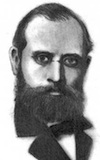
Charles Paxton Zaner was an American calligrapher, pen artist, and teacher of penmanship.

Spencerian script is a handwriting script style based on Copperplate script that was used in the United States from approximately 1850 to 1925, and was considered the American de facto standard writing style for business correspondence prior to the widespread adoption of the typewriter. Spencerian script, an American form of cursive handwriting, was also widely integrated into the school system as an instructional method until the "simpler" Palmer Method replaced it. President James A. Garfield called the Spencerian script, "the pride of our country and the model of our schools."
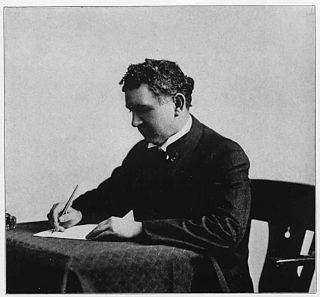
Louis Madarasz was an American calligrapher, born in San Antonio, Texas, regarded as one of the most highly skilled ornamental penmen of all time.

George Bickham the Elder (1684–1758) was an English writing master and engraver. He is best known for his engraving work in The Universal Penman, a collection of writing exemplars which helped to popularise the English Round Hand script in the 18th century.
Patricia Ann Blair is an American calligrapher. She served as White House chief calligrapher and director of the Graphics and Calligraphy Office at the White House.
William Graily Hewit or Graily Hewitt (1864–1952) was a British calligrapher and novelist who played a key role in the revival of calligraphy in England in the early 20th century, alongside Edward Johnston.
The International Association of Master Penmen, Engrossers and Teachers of Handwriting (IAMPETH) is an international association for practicing and preserving the arts of calligraphy, engrossing and penmanship. IAMPETH was founded in 1949.
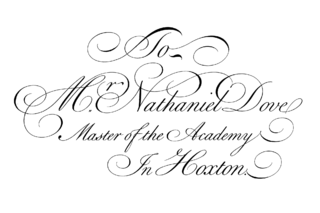
A copperplate script is a style of calligraphic writing most commonly associated with English Roundhand. Although often used as an umbrella term for various forms of pointed pen calligraphy, Copperplate most accurately refers to script styles represented in copybooks created using the intaglio printmaking method.
Zaner-Bloser, Inc., is a company headquartered in Columbus, Ohio, which publishes handwriting, reading, writing, spelling, and vocabulary programs.
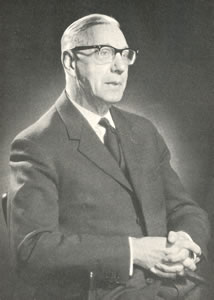
Alfred John Fairbank CBE was a British calligrapher, palaeographer and author on handwriting.
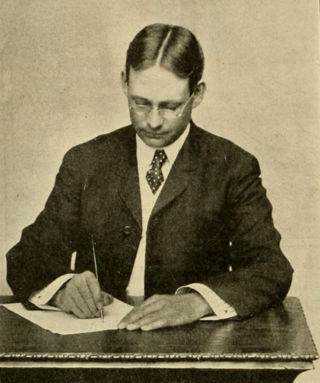
Edward Clarence Mills (1873–1962) was an American master penman and educator, noted for the Business Writing style of cursive handwriting.

Ronde is a kind of script in which the heavy strokes are nearly upright, giving the characters when taken together a round look. It appeared in France at the end of the 16th century, growing out from a late local variant of Gothic cursive influenced by North Italian Renaissance types in Rotunda, a bookish round Gothic style, as well as Civilité, also a late French variant of Gothic cursive. It was popularized by writing masters such as Louis Barbedor in the 17th century.
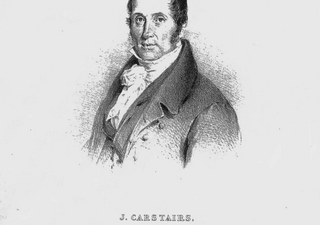
Joseph Carstairs was an English calligrapher and writing teacher who devised a new system and style of writing in the early 19th century. Carstairs's system emphasised a "bold and free writing" when he first introduced it in 1809. In 1814 he published "A New System of Teaching the Art of Writing" which set out the core tenets of his approach emphasizing "muscular movement" up and down the page in an effort to speed up the overall pace of writing. Carstairs was one of the key influences on later cursive writing developments in the United States by Benjamin F. Foster and, in turn, the development of Spencerian penmanship by Platt Rogers Spencer in the 1840s.

The Zaner-Bloser is a teaching script for handwriting based on Latin script as well as a system of penmanship instruction, which originated around 1904 at the Zanerian College of Penmanship in Columbus, Ohio. Charles P. Zaner (1864–1918) and Elmer W. Bloser (1865–1929), originally a Spencerian Method instructor, developed their teaching script with the aim of allowing learners an easier transition from print writing to cursive. The Zaner-Bloser Method first teaches block letters and then cursive in order to enable written expression as quickly as possible and thus develop the ability to write. Material relating to the method of instruction practiced by Zaner and Bloser is still being published by the Zaner-Bloser Company, a subsidiary of Highlights for Children.














